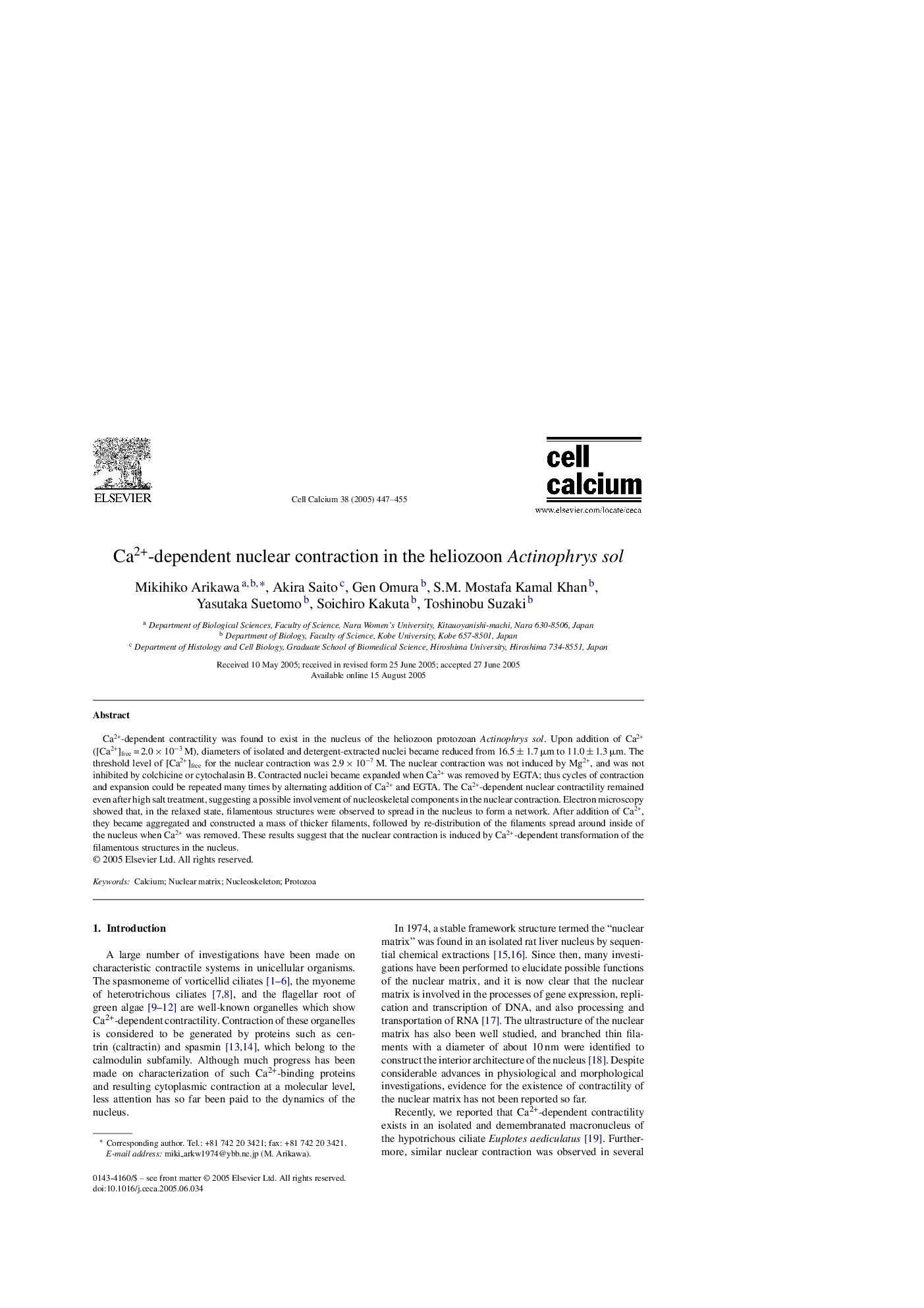| Article ID | Journal | Published Year | Pages | File Type |
|---|---|---|---|---|
| 10926637 | Cell Calcium | 2005 | 9 Pages |
Abstract
Ca2+-dependent contractility was found to exist in the nucleus of the heliozoon protozoan Actinophrys sol. Upon addition of Ca2+ ([Ca2+]free = 2.0 Ã 10â3 M), diameters of isolated and detergent-extracted nuclei became reduced from 16.5 ± 1.7 μm to 11.0 ± 1.3 μm. The threshold level of [Ca2+]free for the nuclear contraction was 2.9 Ã 10â7 M. The nuclear contraction was not induced by Mg2+, and was not inhibited by colchicine or cytochalasin B. Contracted nuclei became expanded when Ca2+ was removed by EGTA; thus cycles of contraction and expansion could be repeated many times by alternating addition of Ca2+ and EGTA. The Ca2+-dependent nuclear contractility remained even after high salt treatment, suggesting a possible involvement of nucleoskeletal components in the nuclear contraction. Electron microscopy showed that, in the relaxed state, filamentous structures were observed to spread in the nucleus to form a network. After addition of Ca2+, they became aggregated and constructed a mass of thicker filaments, followed by re-distribution of the filaments spread around inside of the nucleus when Ca2+ was removed. These results suggest that the nuclear contraction is induced by Ca2+-dependent transformation of the filamentous structures in the nucleus.
Related Topics
Life Sciences
Biochemistry, Genetics and Molecular Biology
Cell Biology
Authors
Mikihiko Arikawa, Akira Saito, Gen Omura, S.M. Mostafa Kamal Khan, Yasutaka Suetomo, Soichiro Kakuta, Toshinobu Suzaki,
